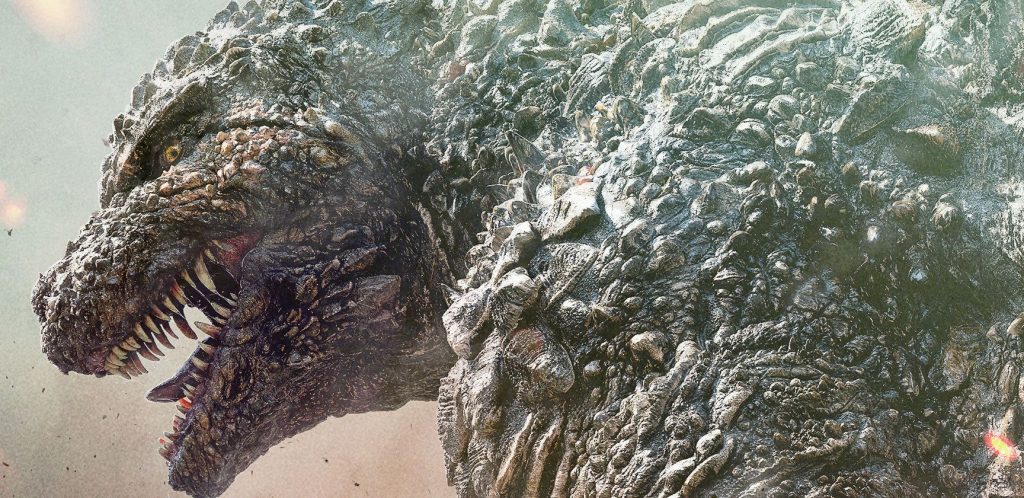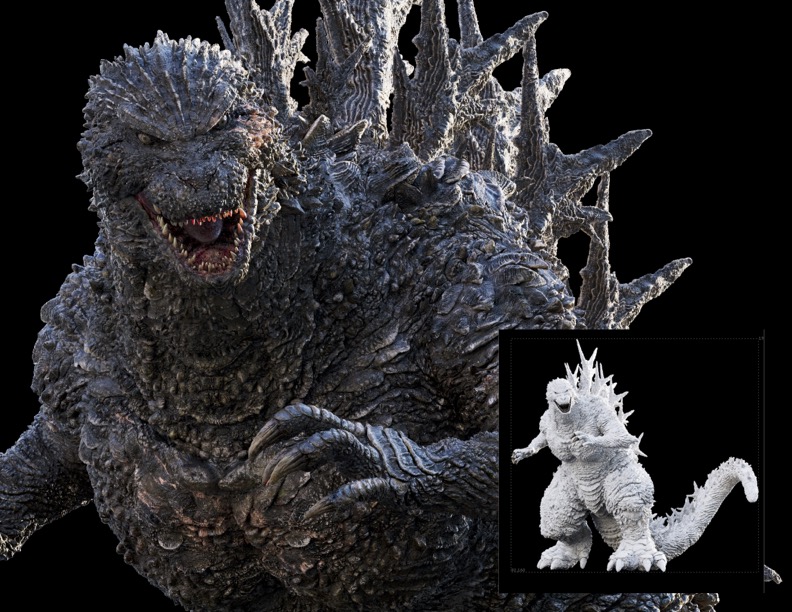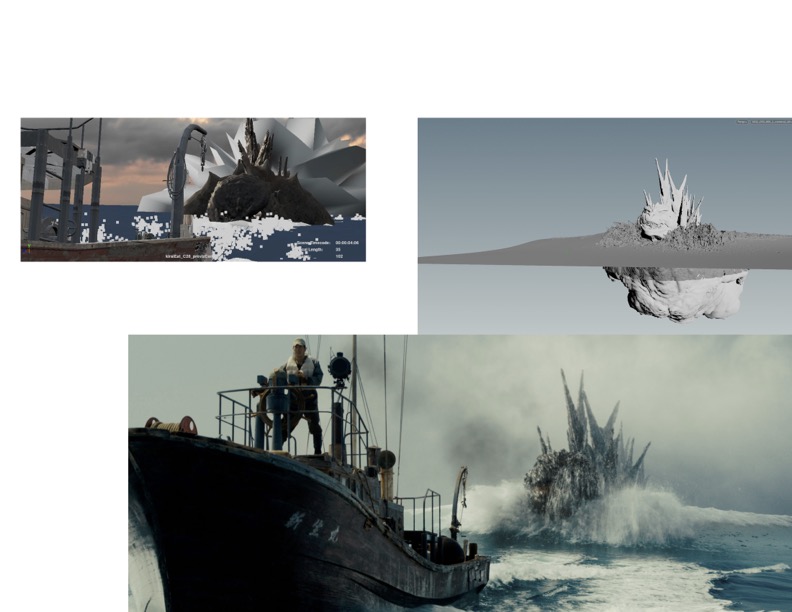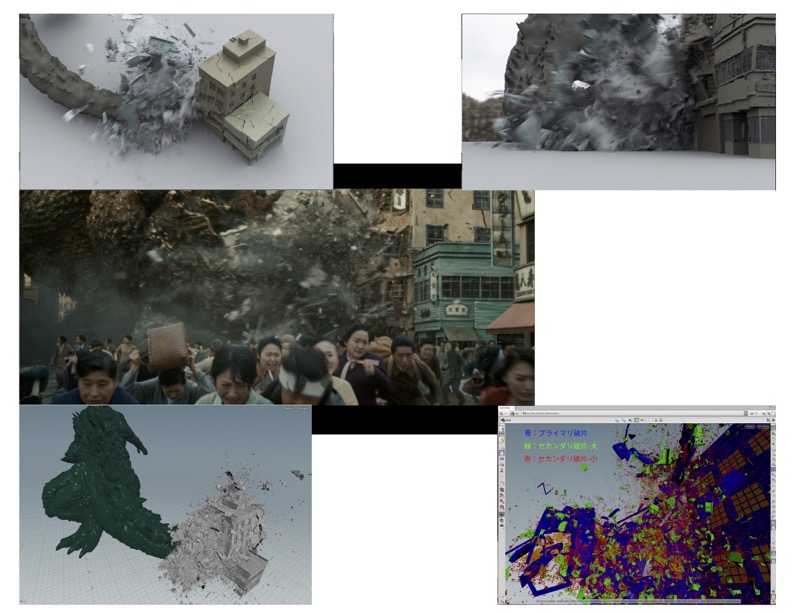
Takashi Yamazaki has had a prolific career in Japan, having directed over 28 films. He has won 6 Japanese Academy Awards and his films have grossed over 500 million worldwide. Known in Japan as a go-to director for blockbuster films with impressive VFX, he was a natural choice to be the next director of Toho’s 33rd Godzilla film.
Godzilla Minus One was written and directed by Yamazaki. This film was remarkable for having not only excellent action but also a moving human story at its center with a World War II theme, which was often present the director’s earlier works. He started his career doing Special Effects, and then years later, he established himself as a director. He would oversee Visual Effects on most of his films, including Godzilla Minus One.
Last November the film opened to rave reviews, big box office numbers, and ultimately an Oscar nomination for Yamazaki for Visual Effects. He has been celebrated throughout Hollywood by various industry players, most notably legendary filmmaker Steven Spielberg. He saw the movie three times.
Yamazaki recently chatted with Below the Line over Zoom with a translator present. The conversation has been edited for clarity.
Below the Line: Do you remember your first impression of Godzilla? Do you remember the first Godzilla movie that you saw?
Takashi Yamazaki: The first Godzilla film I saw was King Kong versus Godzilla, and I think I saw it on TV at the time. I was still really, really young, so I thought, man, Godzilla exists. What a scary creature. But later on, I found out in a magazine there are these color pages on the very few first pages of the magazine and it explained some behind-the-scenes of how there’s a person inside of Godzilla and they’re smashing miniatures to create the footage. And I thought, wow, there is a job that exists where you get to do this for a living. That’s amazing.
BTL: What inspired the story of Godzilla Minus One? There’s the Godzilla part, but the central conflict is very human and very moving.
Yamazaki: There are a few different sources of inspiration. A lot of my prior films focused on either wartime or post-war period pieces. So in making sure I had the accuracy and level of resolution I wanted, had done a lot of interviews with people who had either survived the war or people very close to the war. I’ve done a lot of research, read books, and part of that research included kamikaze pilots and different kamikaze survivors.
I was always wondering what was going through their mind as Japan entered the postwar era, how must they feel? What was their position in society? So that curiosity was one source of the story’s inspiration. There are also novels that I read that inspired me. I think about a lot of the different experiences that I’ve had leading up to Godzilla Minus One and what I have banked as a filmmaker and creator, I put as much as I could into Godzilla Minus One.

BTL: Was there a particular look that you were going for with the film?
Yamazaki: In Japan, we separate the DP role, I would say, between the main cinematographer camera team as well as the lighting team. The roles and responsibilities are divided up a little bit, but the so-called DP and the team, and I, have worked on many projects. With my instruction or direction, we want to create this post-war touch vibe, so to speak, a lot of the actual production was decided through that direction. But more so I think the colorist in post-production had a huge impact on the final look or feel. And again, we’ve worked together, the colorist and I, on several projects. He was able to get that final flavor, that spice that you see, which is showing on the screen.
BTL: Talk a little bit about the editing process. What pace did you want to set?
Takashi: This might be another difference between filmmaking in the US and Japan, but when we have the screenplay and the storyboard and we’ve shot the film, once we get into post-production, one of the first things we do is kind of lay out a timeline of what we believe the edit is going to look like and we’ll put in everything that’s a work in progress, incomplete shots, but it’s really to set the pacing and the overall blueprint of what it is we’re trying to achieve. And from there we’ll start doing some minor adjustments or tweaks. And there are on occasion times when we’ll take entire blocks or scenes and shift them or move them around. But we start with this sort of foundation or timeline where we’re able to get an understanding of the entire scope of the film.

BTL: Tell us a little bit about your visual effects background and how that came into play on this project.
Yamazaki: I think the final vision and the image, the imagery we’re trying to create and throw up on the screen was quite clear. I knew what I was looking for and how the final picture was going to look. I think there’s a very high synchronicity, so to speak, whereas if these roles are separated, I think the director, VFX, supervisor, and all the different people in between will have a different vision or different image in their minds. It’s hard to get all of those pointing in the same direction. So there’s going to be a lot of feedback loops will be necessary to make sure everyone is pointed in the same direction.
In our case, because we were able to eliminate that, there was constant forward progress towards the final image as opposed to a lot of different exploration. And for example, someone would go in a different direction and then realize, oh crap, we got to scrap the shot and scrap the VFX and go back to the drawing board. So that helped us constantly work towards the final picture.
BTL: The box office has been amazing and the general feedback has been overwhelmingly positive. What do you make of the reaction?
Yamazaki: If you had asked me this question two, three months ago, I would’ve said, “Hey, everything that you’ve mentioned that is going to happen is impossible because there’s just absolutely no way.” I feel I’m still in this storm of confusion and just chaos and surrealism because of how fast everything has happened between when the movie was theatrically released and now.
With regards to the audience reception, it was quite surprising, because to be quite frank, concerning the North American release, this movie had everything you could want for it to fail. I thought because there was no dubbing, it was all going to be subtitled and performances were going to be in Japanese, I didn’t expect a huge theatrical rollout, which it ended up becoming, and for better or worse, Toho Studios said they were going to self-distribute this particular film as opposed to working with another partner studio for distribution in the us.
So I felt we’ve checked all the boxes and had everything set to fail with this project. And I thought, well, you can’t complain given the circumstances. But everything has blown my expectations way out of the water. Of course, the perception of the box office makes me happy to see how it’s been received by international and foreign audiences.
But to add a cherry on top, again, the recognition at the different awards and the highest of all awards, the Academy and Oscar to be nominated in the VFX category, which is a culmination of my entire career, I think, is one of the highest honors. I have to thank Godzilla for opening the door and giving us this new perspective and new view on the film industry. I think if it wasn’t for Godzilla, a lot of what we do wouldn’t have been placed on the international stage. Godzilla’s brand and history and recognition, I have to thank.

BTL: What was it like meeting Steven Spielberg?
Yamazaki: I didn’t think I was going to have the opportunity to interact or interface with Spielberg during this lifetime, so to speak, or while Spielberg was still alive. And the fact that it wasn’t just a handshake and a hi, we got to converse. He talked about how he’s seen the film three times, complimented our VFX, and our story, and here I am standing thinking to myself, what did I do to deserve such an amazing reward? When we were in production, my entire focus was just on making the best possible Godzilla film and giving the audience a fun experience.
But it goes to show again, how massive of existence Godzilla has, how Godzilla returned the favor in such an amazing form. I’m just still very overwhelmed. Perhaps my career and my experience will have peaked here, not just the fact that I got to talk to Spielberg, but also that Spielberg was a fan of Godzilla as a whole, not just that he liked my Godzilla and saw it three times. So again, I think it is just a huge reward and I have to take this to heart and apply it to whatever it is I do next.





